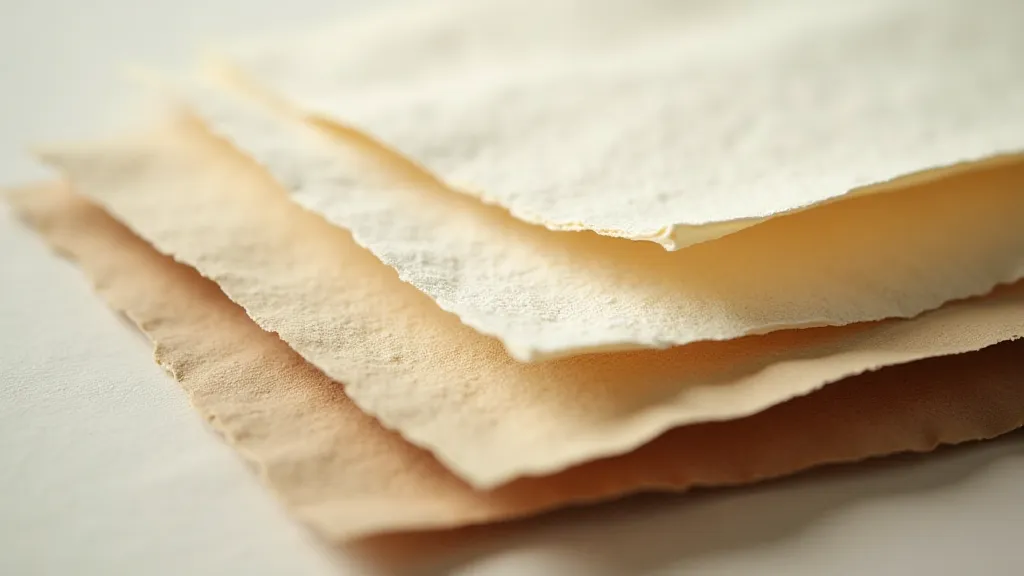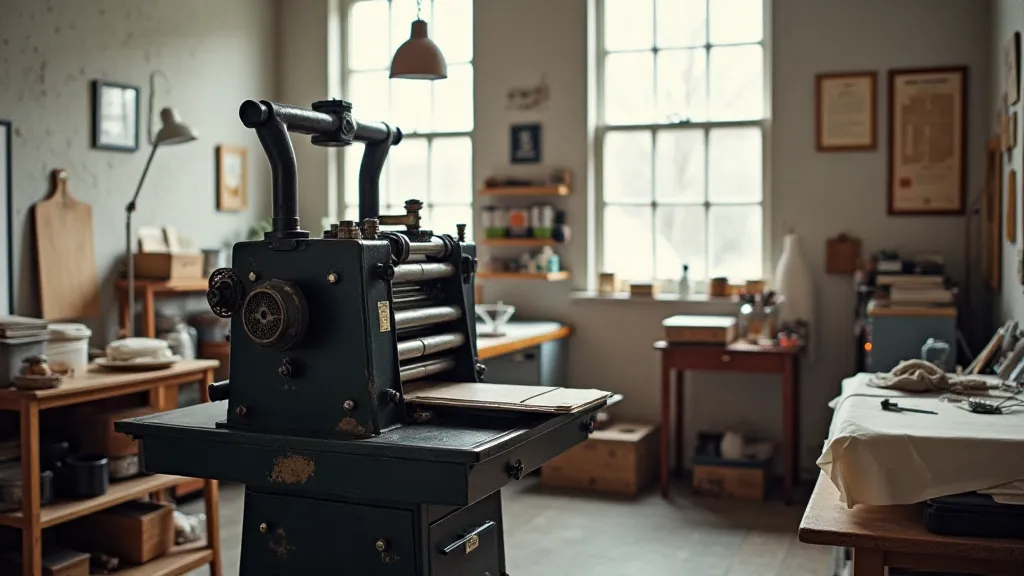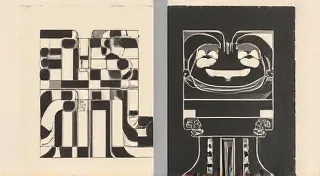The Eco-Friendly Appeal of Letterpress Printing
In a world increasingly conscious of environmental impact, many creative fields are re-evaluating their practices. Letterpress printing, a traditional craft experiencing a resurgence, surprisingly aligns exceptionally well with sustainable and responsible production. While seemingly antiquated, the techniques and material choices often inherent in letterpress can offer a surprisingly eco-friendly alternative to modern digital printing. The dedication to quality and the inherent limitations of the process itself often lead to more thoughtful resource management than high-volume digital approaches.
Why Letterpress and Sustainability Go Hand-in-Hand
The appeal isn's just aesthetic; it’s rooted in a more considered approach to production. Modern printing often relies on large-scale, energy-intensive processes and chemical-heavy inks. Letterpress, in contrast, tends to be a more localized and hands-on endeavor. The smaller scale often means less waste and a closer relationship between the printer and the materials they use. This allows for more conscious decisions regarding resource utilization. Understanding the intricacies of the process, like the vital step of locking up a letterpress form, highlights the meticulousness involved and further underlines the emphasis on careful resource management.

Eco-Friendly Inks: A Crucial Element
One of the most significant ways letterpress can be eco-friendly lies in the inks used. Traditional letterpress inks, while often oil-based, are increasingly being replaced with more sustainable options:
- Soy-Based Inks: Derived from soybeans, these inks are renewable and biodegradable. They generally have a lower volatile organic compound (VOC) content than traditional petroleum-based inks.
- Vegetable-Based Inks: Beyond soy, inks can be derived from other plants like linseed, safflower, and even walnuts. These offer similar benefits in terms of reduced environmental impact.
- Water-Based Inks: Becoming increasingly popular, water-based inks significantly reduce VOC emissions and are easier to clean up.
The choice of ink is a direct reflection of a printer's commitment to sustainability. Many letterpress studios actively seek out these environmentally responsible alternatives. The subtleties of color and texture achievable with these inks are a key element in the beauty and allure of letterpress. The skilled craftspeople behind letterpress printing, often running their own studios, understand the importance of these material choices and can guide clients toward the most sustainable options – a knowledge that could be invaluable for those considering starting their own letterpress business.
Paper Choices Matter: Recycled and Beyond
The paper used in letterpress printing is another critical factor in its environmental footprint. Just as with inks, sustainable paper options are readily available:
- Recycled Paper: Choosing paper with a high percentage of post-consumer recycled content significantly reduces the demand for virgin fibers.
- FSC-Certified Paper: The Forest Stewardship Council (FSC) certification ensures that paper comes from responsibly managed forests.
- Cotton Paper: Made from recycled cotton scraps (often from the textile industry), cotton paper offers a beautiful texture and a unique story.
The tactile nature of letterpress often enhances the beauty of these specialty papers, making the entire process a more rewarding and conscious experience. The impact of font choice and paper texture are closely intertwined in letterpress, creating a visual and tactile experience. Letterpress is inherently linked to the art of letterpress and typography, where the interplay between form and material elevates the final product.

Responsible Production: Minimizing Waste & Energy
Beyond materials, responsible letterpress printing involves mindful production methods:
- Small Batch Production: The nature of letterpress necessitates smaller print runs, reducing the risk of overproduction and wasted materials.
- Energy Efficiency: Many letterpress studios utilize older, manually powered presses which require less electricity than modern printing equipment.
- Waste Reduction: Printers often find creative uses for scrap paper and ink, minimizing waste sent to landfills.
The Connection to Design and Aesthetics
Letterpress isn’t merely about choosing eco-friendly materials; it’s about a holistic approach to design and production. The limitations of the process – the pressure required, the ink coverage, the paper thickness – force a deeper engagement with the design itself. These constraints foster creativity and result in work that feels more considered and intentional. The depth and richness of the impression are unlike anything achievable through digital printing, creating a truly tactile and visually striking piece.
Beyond the Basics: Expanding Your Understanding
For those looking to delve deeper into the world of letterpress, understanding the nuances of the process and its implications for sustainability is essential. From the careful selection of inks and papers to the intricacies of press operation and design, every step contributes to the overall environmental impact. The demand for beautiful, sustainable wedding materials is consistently high, with many couples choosing letterpress for their letterpress printing for weddings, seeking unique and eco-conscious invitations.
The Future of Letterpress and Sustainability
As awareness of environmental issues continues to grow, the appeal of letterpress printing is only likely to increase. Consumers are actively seeking products that align with their values, and letterpress offers a tangible way to support sustainable practices. The resurgence of this traditional craft represents a broader shift towards valuing craftsmanship, authenticity, and environmental responsibility. The ability to connect directly with customers and share the story behind each piece is a powerful advantage for letterpress studios.

Detailed Material Breakdown & Environmental Impact
Let's take a more granular look at how specific material choices impact the overall sustainability of letterpress printing.
Inks: Traditional petroleum-based inks release VOCs into the atmosphere, contributing to air pollution and potentially impacting human health. Soy-based and vegetable-based inks significantly reduce this impact, utilizing renewable resources and offering biodegradability. Water-based inks are considered among the most eco-friendly options, minimizing VOC emissions and facilitating easier cleanup, reducing solvent waste.
Papers: Virgin paper production involves deforestation, significant water usage, and energy consumption. Recycled paper drastically reduces these impacts, conserving forests, minimizing water usage, and lessening energy requirements. FSC-certified paper ensures responsible forestry practices, preventing deforestation and promoting biodiversity. Cotton paper, derived from textile waste, provides a unique texture and story, diverting waste from landfills and reducing the demand for virgin fibers.
Other Materials: Even seemingly minor components like cleaning solvents and press lubricants can have environmental impacts. Choosing biodegradable and eco-friendly alternatives is crucial for minimizing the overall footprint of letterpress printing.
Letterpress Printing: A Craft Resurgent
The current revival of letterpress printing is more than just a nostalgic return to tradition; it represents a conscious choice to embrace a more sustainable and meaningful approach to creation. It’s a rejection of mass production and disposable goods in favor of handcrafted quality and lasting beauty. It’s a testament to the enduring power of human skill and the importance of connecting with the materials we use. By understanding and prioritizing environmental responsibility, letterpress printers can not only create stunning work but also contribute to a more sustainable future.





